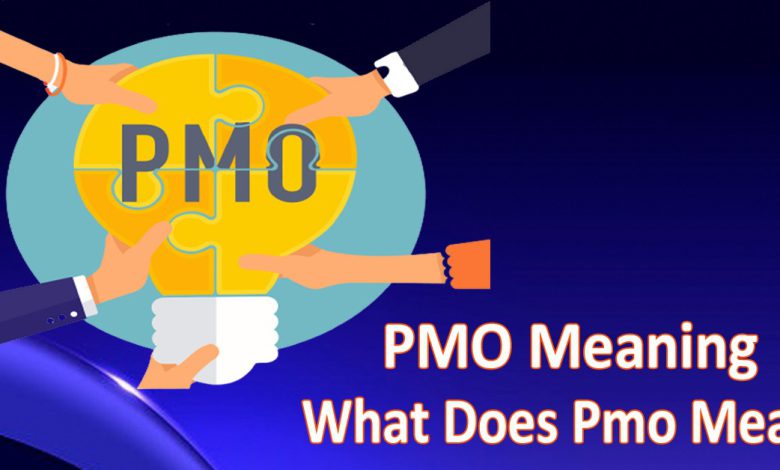PMO Meaning – What Does PMO Mean

What does PMO mean?
PMO stands for Project Management Office. A PMO is a group or department within an organization that provides support, governance, and best practices to project managers. It is a role within a company that is responsible for the overall success of a project. The PMO ensures that all aspects of the project are completed on time and within budget. They also work to ensure that the project meets all requirements and goals.
What is PMO Meaning?
PMO Meaning a project management office (PMO) is a department responsible for the overall management of an organization’s projects. The PMO may also be responsible for other functions, such as governance, portfolio management, risk management, and quality assurance. The PMO provides a centralized point of control for all projects within an organization. It is responsible for ensuring that projects are completed on time, within budget, and to the required level of quality. The PMO also provides support and advice to project managers throughout the life cycle of a project. In many organizations, the role of the PMO is to ensure that projects are delivered successfully and in line with the organization’s strategy. The PMO may also be responsible for developing and maintaining project management methodology and standards.***

Functions of PMO:
The main functions of a PMO are given below
- It provides support, governance, and best practices to project managers. Support can come in the form of coaching, templates, training, and other resources.
- Governance typically includes creating and enforcing standards for how projects are run within an organization.
- Best practices involve sharing lessons learned across projects and maintaining a repository of successful project management methods.
Not all PMOs perform all three functions, but most will offer some combination of them.
The size and scope of a PMO can vary greatly from one organization to the next. Some PMOs only support a few dozen projects, while others manage hundreds or even thousands. Some PMOs are responsible for a single line of business, while others support the entire enterprise, and some PMOs report to the CEO, while others report to the CIO or another executive.
The one constant is that a PMO can help an organization get better at managing its projects and achieving its strategic objectives.
Types of PMO:
There are three main types of PMOs: The type of PMO that is right for your organization will depend on its culture, size, structure, and needs.
- A Supportive PMO is focused on providing resources and support to project managers.
- A Controlling PMO is focused on enforcing standards and ensuring that projects are completed on time, on budget, and within scope.
- A Directive PMO is focused on dictating how projects should be run and making decisions for the project managers.
The type of PMO you choose should align with the overall goals of your organization.
Further Types of PMO in different categories are :
- A divisional PMO is responsible for managing the projects of a specific business unit or division.
- An enterprise PMO is responsible for managing the projects of the entire organization.
- A functional PMO is responsible for managing the projects of a specific function, such as IT, HR, or Marketing.
- A program PMO is responsible for managing a group of related projects that are working towards a common goal.
If you want your organization to be more agile and responsive, a Supportive PMO is likely the best choice.
PMO Processes:
It’s vital for businesses and startups to understand what is PMO meaning. There are four main processes that a PMO can perform:
Project initiation is the process of creating a new project and getting it approved by the stakeholders.
Project planning is the process of creating a detailed plan If you want your organization to be more disciplined and focused, a Controlling or Directive PMO may be a better fit.
Project execution is the process of carrying out the project according to the plan.
Project closeout is the process of completing the project and ensuring that all deliverables are met.
A PMO can perform all four processes, or it can focus on one or two depending on the needs of the organization.
How to Set Up a PMO:
There are six steps involved in setting up a PMO:
- The first step is to define the goals and objectives of the PMO.
- The second step is to assess the current state of project management in the organization. This assessment will help you identify gaps and areas for improvement.
- The third step is to develop a plan for setting up the PMO. This plan should include who will be responsible for what, how the PMO will be structured, and what resources will be required.
- The fourth step is to implement the plan. This involves setting up the PMO according to the plan and making sure that all of the necessary resources are in place.
- The fifth step is to evaluate the results. This evaluation should be done periodically to make sure that the PMO is meeting the goals and objectives that were set in the beginning.
- The sixth step is to make adjustments as needed. As the organization changes, the PMO will need to adapt to stay effective.
A PMO can be a great asset to any organization. By definition, a PMO is responsible for providing support, governance, and best practices to project managers. The size and scope of a PMO can vary greatly, and the type of PMO you choose should align with the overall goals of your organization.
If you’re thinking about setting up a PMO in your organization, there are six steps you need to take and this will be very effective for you. A well-run PMO can be a great asset to any organization, helping to improve project management practices and achieve strategic objectives.
Conclusion:
You now have a greater understanding of PMO in project management and how it might be used to enhance project performance. Furthermore, you are more knowledgeable about the significance of PMO in every organization and what makes a successful PMO, and all about the PMO. This data can assist you in better understanding what a PMO means, which will aid you in improving your organization.




